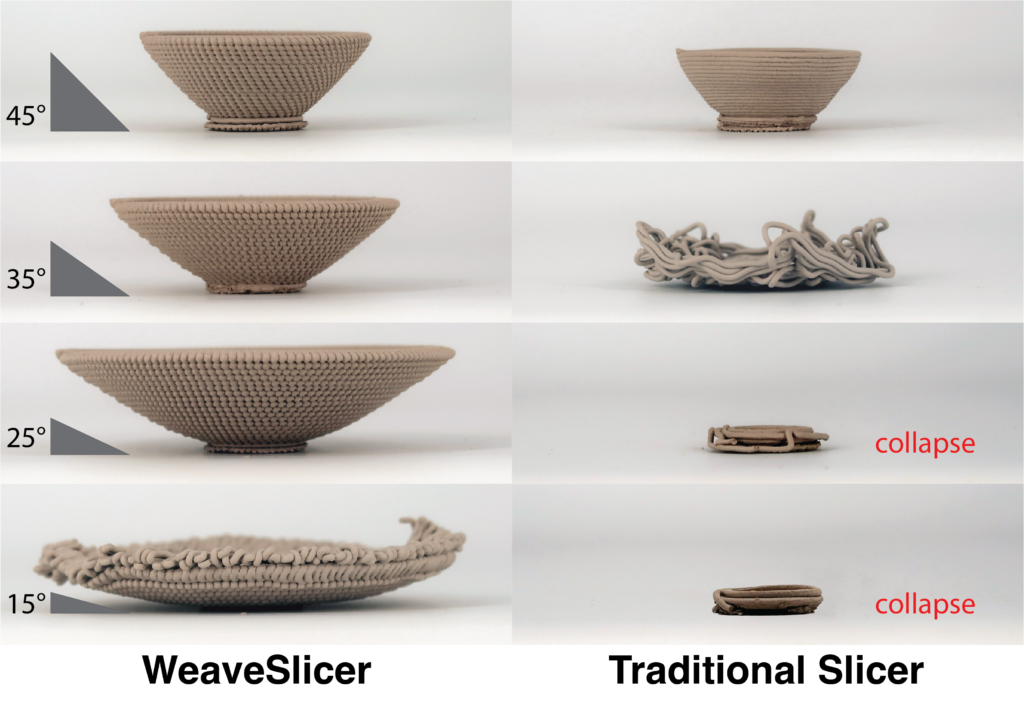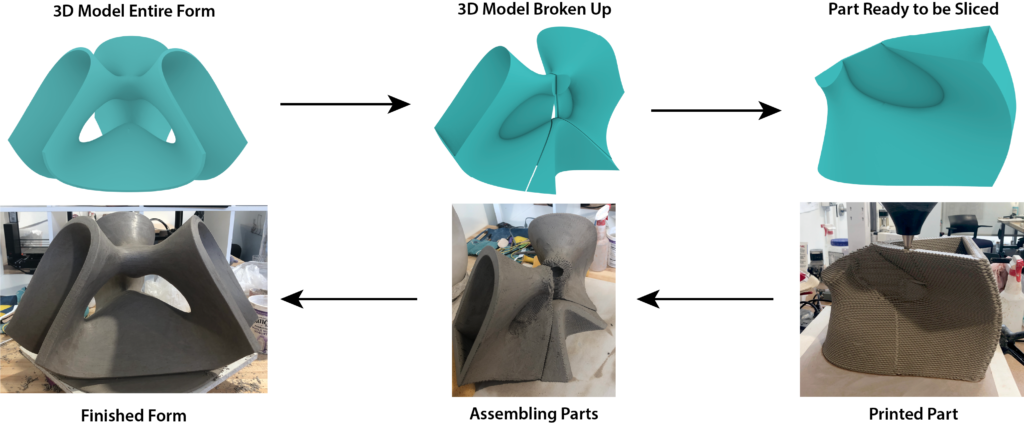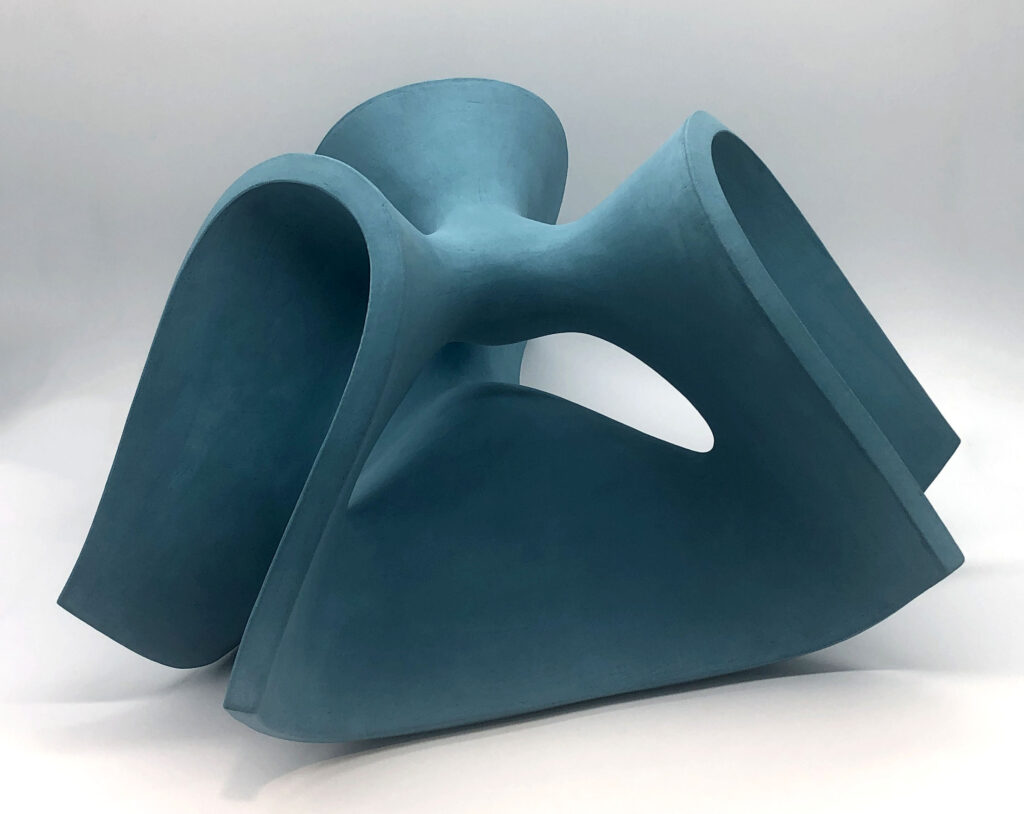WeaveSlicer: CAM for Clay 3D Printing
WeaveSlicer is a slicer optimized for 3D printing in clay that enables designers to print a much larger range of geometry than was previously possible. Dramatic angles in a form cause clay prints generated by traditional slicers to collapse. WeaveSlicer increases the structural stability of clay 3D prints by generating prints with walls of uniform thickness.
Years:
2023-current
Collaborators: Camila Friedman-Gerlicz, Deanna Gelosi, Fiona Bell, and Leah Buechley
Publications:
Camila Friedman-Gerlicz, Deanna Gelosi, Fiona Bell, and Leah Buechley. 2024. WeaveSlicer: Expanding the Range of Printable Geometries in Clay. Proceedings of the 2024 CHI Conference on Human Factors in Computing Systems (CHI’24). Association for Computing Machinery, New York, NY, USA. https://doi.org/10.1145/3613904.3642622
Approach
WeaveSlicer works like many other slicers, where the user inputs a 3D model and choses various parameters. WeaveSlicer then produces a .gcode file that can be used on a range of clay 3D printers. Traditional slices maintain a constant layer thickness throughout the print, but this results in a thinner wall where there is a steeper overhang. WeaveSlicer prompts the user to pick a wall thickness, and produces a sinusoidal curve whose amplitude will vary to maintain the same wall thickness throughout.

Testing
We conducted a series of tests, comparing forms generated by WeaveSlicer to forms generated by traditional slicers and found that WeaveSlicer enables the printing of a much larger class of forms than traditional slicers do. The image below shows a series of bowls with different overhang angles, comparing print paths generated by WeaveSlicer, on the left, and a traditional slicer, on the right.

Workflow


Final fired and glazed form, a sculpture by Camila Friedman-Gerlicz.